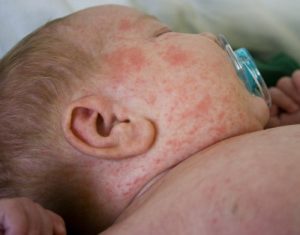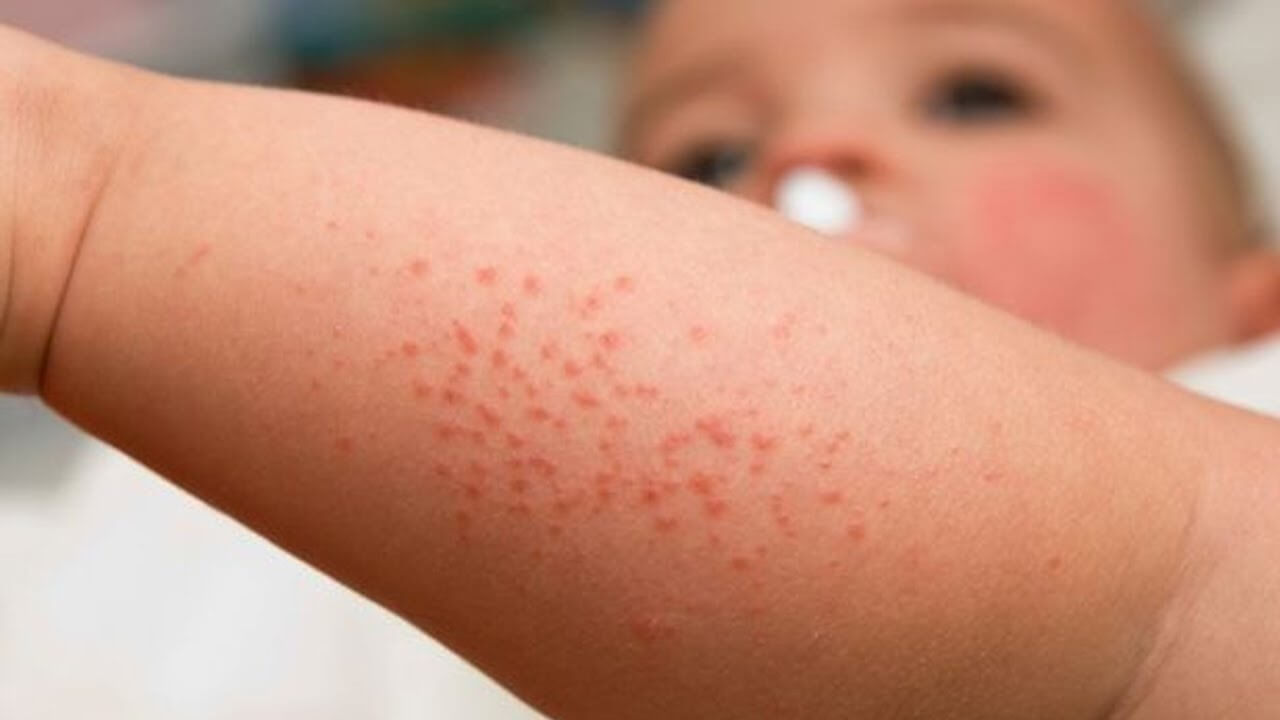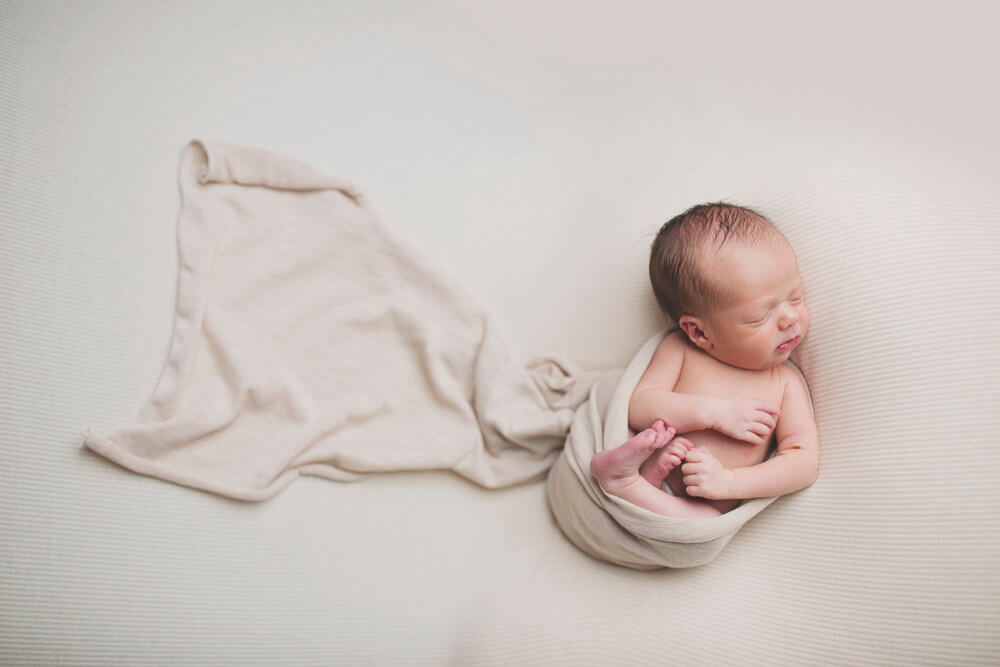Miliaria In Babies


Written and verified by the doctor Nelton Ramos
Babies are very fragile beings that need their parents to protect and take care of them at all times. When something goes wrong in their body it is important for parents to know what to do or when to take the baby to the doctor to treat their ailments as soon as possible. In this article we will talk about miliaria in babies.
Miliaria, also known as sudamina, is more common than you might imagine. It is a skin rash that occurs in babies due to their delicate skin. The rash causes an obstruction of sweat glands and this in turn causes the baby to be unable to sweat.
When sweat does not come out, it remains retained in the skin and can cause small red papules or even blisters. These papules can be uncomfortable for a baby; they can be itchy or even sting in the case of blisters.
Miliaria in babies
These papules can come in different sizes and appearances; they can even be more or less concentrated in different areas of the body. It all depends on the severity of the miliaria that the little one is suffering from. There are mild cases in which there are only little crusts and some skin irritation.
In more severe cases there is a lot of itchiness and stinging pain. Miliaria usually lasts for a few days, however if parents do not employ proper skin care or the child lives in a hot and humid environment, it can reappear with different intensities.

There is no specific site on the body where this ailment appears, however it is more common around the face, arms, armpits, inguinal region, thighs and chest. The irritation can be in clumps in one region of the body, but it can also disperse and be present in many different areas. Symptoms can vary from one baby to the next.
“There is no better job in the world than taking care of your baby” — unknown author
Preventing Miliaria
Since miliaria is fairly common in babies, the best thing a parent can do is to follow a series of guidelines to try to avoid or prevent it. If you notice that your child presents a lot of irritation or itchiness you will have to consult your paediatrician in order to evaluate the severity of the case. Your paediatrician will also give you the treatment they believe is best.
In addition to this you can also use the following tips:
- When it is hot or humid, keep your baby cool and dry. Dress them in light clothing, your best option is cotton. Make sure it is not too tight.
- Keep your home at a comfortable temperature, prevent too much heat by using fans or air conditioning.
- Prevent diaper rash by frequently changing diapers.
- Prevent skin irritation by using comfortable clothes that are not too tight. Tight clothes can cause unnecessary friction.
- Use only shower gel that is specifically made for a baby’s sensitive skin.
- Avoid too much sun exposure and always protect their skin with baby sunscreen and adequate clothing.

When Miliaria has already appeared
If your child already has miliaria you should consult your paediatrician to find out the best form of treatment. It is also important for you to follow the tips provided above to prevent the ailment from getting worse. Your paediatrician might recommend a special cream for their sensitive skin.
If your baby is experiencing intense itchiness, your pediatrician might recommend cream that contains cortisone. Cortisone creams reduce itchiness and inflammation. It is important whatever the severity of your child’s miliaria to consult your doctor in order to get a professional opinion.
Babies are very fragile beings that need their parents to protect and take care of them at all times. When something goes wrong in their body it is important for parents to know what to do or when to take the baby to the doctor to treat their ailments as soon as possible. In this article we will talk about miliaria in babies.
Miliaria, also known as sudamina, is more common than you might imagine. It is a skin rash that occurs in babies due to their delicate skin. The rash causes an obstruction of sweat glands and this in turn causes the baby to be unable to sweat.
When sweat does not come out, it remains retained in the skin and can cause small red papules or even blisters. These papules can be uncomfortable for a baby; they can be itchy or even sting in the case of blisters.
Miliaria in babies
These papules can come in different sizes and appearances; they can even be more or less concentrated in different areas of the body. It all depends on the severity of the miliaria that the little one is suffering from. There are mild cases in which there are only little crusts and some skin irritation.
In more severe cases there is a lot of itchiness and stinging pain. Miliaria usually lasts for a few days, however if parents do not employ proper skin care or the child lives in a hot and humid environment, it can reappear with different intensities.

There is no specific site on the body where this ailment appears, however it is more common around the face, arms, armpits, inguinal region, thighs and chest. The irritation can be in clumps in one region of the body, but it can also disperse and be present in many different areas. Symptoms can vary from one baby to the next.
“There is no better job in the world than taking care of your baby” — unknown author
Preventing Miliaria
Since miliaria is fairly common in babies, the best thing a parent can do is to follow a series of guidelines to try to avoid or prevent it. If you notice that your child presents a lot of irritation or itchiness you will have to consult your paediatrician in order to evaluate the severity of the case. Your paediatrician will also give you the treatment they believe is best.
In addition to this you can also use the following tips:
- When it is hot or humid, keep your baby cool and dry. Dress them in light clothing, your best option is cotton. Make sure it is not too tight.
- Keep your home at a comfortable temperature, prevent too much heat by using fans or air conditioning.
- Prevent diaper rash by frequently changing diapers.
- Prevent skin irritation by using comfortable clothes that are not too tight. Tight clothes can cause unnecessary friction.
- Use only shower gel that is specifically made for a baby’s sensitive skin.
- Avoid too much sun exposure and always protect their skin with baby sunscreen and adequate clothing.

When Miliaria has already appeared
If your child already has miliaria you should consult your paediatrician to find out the best form of treatment. It is also important for you to follow the tips provided above to prevent the ailment from getting worse. Your paediatrician might recommend a special cream for their sensitive skin.
If your baby is experiencing intense itchiness, your pediatrician might recommend cream that contains cortisone. Cortisone creams reduce itchiness and inflammation. It is important whatever the severity of your child’s miliaria to consult your doctor in order to get a professional opinion.
All cited sources were thoroughly reviewed by our team to ensure their quality, reliability, currency, and validity. The bibliography of this article was considered reliable and of academic or scientific accuracy.
- Barbarot, S., & Stalder, I. F. (2003). Dermatología neonatal. EMC-Pediatría, 38(2), 1-17. https://www.sciencedirect.com/science/article/pii/S1245178903720472
- Bayliss S. (1991). Trastornos cutáneos neonatales. Clin Ped Norteamérica 1991; 4: 767-81.
- Bellver, E., Carnero, L., González, M. A., Vicente, M. A., & Krauel, X. (2002). Problemas dermatológicos más frecuentes del recién nacido. Junta Directiva de la Asociación Española de Pediatría, 245. https://www.researchgate.net/profile/Alfredo_Garcia-Alix/publication/237744456_Asfixia_intraparto_y_encefalopatia_hipoxico-isquemica/links/02e7e52d123fdba509000000/Asfixia-intraparto-y-encefalopatia-hipoxico-isquemica.pdf#page=250
- Weston, W. L., Lane, A. T., & Morelli, J. G. (2008). Dermatología pediátrica. Elsevier España.
- Zambrano A, López-Barrantes V. (1991). Afecciones cutáneas del recién nacido. En: Dermatología Pediátrica. Ed Jims, Barcelona, 1991; 1-15.
This text is provided for informational purposes only and does not replace consultation with a professional. If in doubt, consult your specialist.








